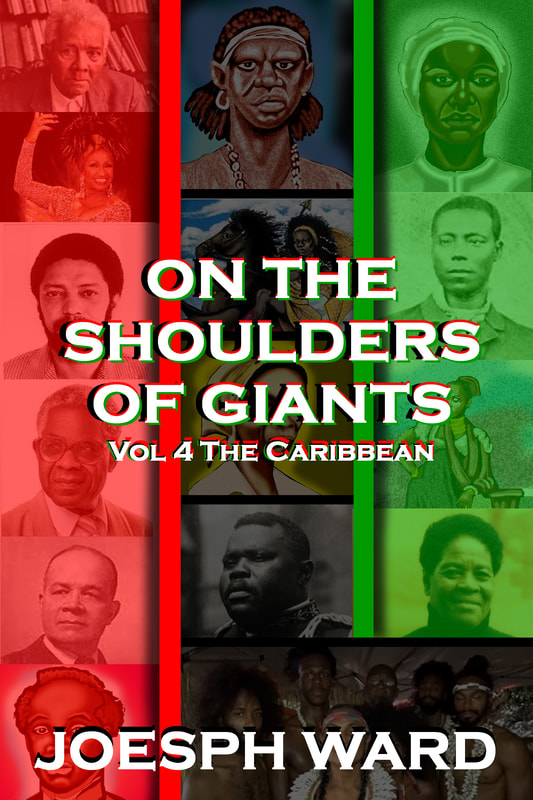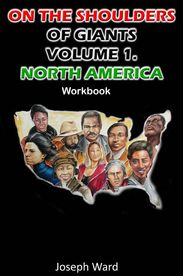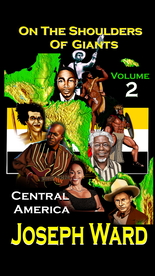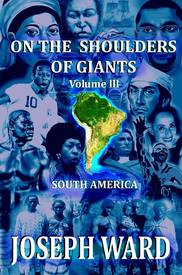|
Frances Luella Cress was born on March 18th, 1935 in Chicago, Illinois to parents Dr. Henry Cress and Mrs. Ida Mae Griffen. Dr. Henry Cress was a physician who earned his Ph. D. from the University Of Illinois College Of Medicine in 1931, Ida Mae Griffen was a school teacher. Her grandfather was a physician and surgeon named Dr. Henry Clay Cress. Dr. Welsing’s parents and grandparents created a sound foundation for her to set the world on fire with her intellect and courage. She graduated from Wendell Phillips High School in 1953 before attending Antioch College located in Yellow Springs, Ohio. During her time as a student at Antioch College Dr. Welsing was able to work in the medical school laboratory at Northwestern University. In 1955, she participated in a work study program that required the students to complete classroom work and gain full-time experience working in their chosen field. Her work consisted of serving as a lab technician for the bio-chemistry department of the New York State Psychiatric Institute. She graduated from Antioch College in 1957 earning a bachelor’s of science degree. Her next step was to enroll into Howard University’s College of Medicine where she earned her M.D. in 1962. Following her graduation from Howard University’s college of Medicine Dr. Welsing completed a three year residency program at St. Elizabeth’s Hospital in Washington D.C. She then concluded a two year fellowship in Child Psychology at Children’s Hospital which is also located in Washington D.C. She worked as a general and child psychiatrist before working as a physician for the Department of Human Services. She became the clinical director for a number of schools in the D.C. area working with emotionally troubled children before opening her own practice in 1967. In 1969, Dr. Welsing wrote a letter titled “Distorted Logic” that was published in the “Black Voices” column of the Afro Newspaper. The letter was the beginning of Dr. Welsing delivering her understanding of the global system of white supremacy/racism and how it responds to the melanated people of the world. The letter specifically questioned the My Lai massacre that happened in the south of Vietnam and the many massacres that happened to the Africans around the globe. Dr. Welsing noted that white America was hypocritical in its criticism of racism even though they continued to teach their children to uphold the legacy of white supremacy. Later in 1969, Dr. Welsing wrote the Cress Theory of Color Confrontation which was a paper that further broke down the relationship between white supremacy and the worlds people of color, specifically the heavily melanated people. Within the paper she gave attention to a statement made by the Black Caucus of the American Psychological Association which stated, “Racism was the number one mental health problem in the nation and was the number one cause of mental health problems.” Around this time Dr. Welsing met a brilliant man named Neely Fuller Jr. who helped her understand that racism was a system of domination and control of every major area of human activity. Fuller Jr. is the author of the book The United-Independent Compensatory Code/System/Concept Textbook: A Compensatory Counter-Racist Code. The Cress Theory of Color Confrontation was officially published in 1974 and was the first of her major published works. In 1975, Dr. Welsing began having troubles with the administration at Howard University. She was denied tenure with the university because of her “controversial” views about racism, homosexuality and white supremacy. The dean of the medical school did not want to promote Dr. Welsing from an assistant professor to an associate professor because of her views. The situation was officially reviewed by university officials because the medical school committee voted to promote Dr. Welsing but the dean was against the promotion. In 1975, Dr. Welsing was fired by Howard University without any substantial reason other than being afraid of Dr. Welsing’s views against white supremacy. In February of 1974, Dr. Welsing participated in a debate against a white man named Dr. William Shockley on the television show Tony Browns Journal. The debate centered on Dr. Shockley claiming that blacks were not suffering from racism rather they are genetically inferior beings compared to whites. Dr. Welsing used her research and superior intellect to systematically tear Dr. Shockley to shreds and damming his false claims. Black people have never been and never will be genetically inferior to whites or any other race of people. In 1991, Dr. Wesling published a masterpiece of a book titled The IsIs Papers: The Keys To The Colors, which was a collection of the essays she wrote as she gained a better understanding of the system of white supremacy. The book gave a great overview of how white supremacy is ingrained in every facet of life and how symbols, mis-education, social engineering, violence and other methods are used to help maintain white supremacy and prevent genetic annihilation by African people. She wrote about how the black male’s genitals were constantly under attack and how homosexuality, abortions and constant killings of black people are used to maintain low numbers of blacks and decrease reproduction. Dr. Welsing was a titan in the black conscious movement for over fifty years. Her theories though controversial to those who did not believe in black liberation, were revolutionary in helping to understand what has happened to African people because of white supremacy. She spent many years traveling around the world lecturing and teaching her theories to thousands of students who were honored to learn from her. She was such a powerful figure that many of her opponents waited until her death in January of 2016 to challenge her theories. They knew of her brilliance and were afraid to challenge her while she was alive. Though the world lost a great person she left an amazing legacy that will never die. She helped us understand what racism was and how it impacted African people. Neely Fuller Jr stated, “If you don’t understand White Supremacy (Racism) – what it is, and how it works – everything else that you understand, will only confuse you.” She is greatly loved and greatly missed by the black community. Dr. Frances Cress Welsing we proudly, proudly, stand on your shoulders. J.A. Ward References:
https://keyamsha.com/2017/05/29/melanin-momma-too-more-on-dr-frances-cress-welsing/ Little Known Black History Fact: Dr. Frances Cress Welsing https://www.encyclopedia.com/education/news-wires-white-papers-and-books/welsing-frances-cress-1935 https://en.wikipedia.org/wiki/Frances_Cress_Welsing http://www.blackpast.org/aah/welsing-frances-cress-1935-2016
1 Comment
The South American countries of Suriname and French Guiana are home to many groups of people called Maroons who are African people that escaped slavery and created their own societies. The Saramaka People are one of six groups of Maroons who inhabit the two countries, the Ndyuka, Matawari, Paramaka, Aluku, and Kwinti are the other five groups of Maroons; together these six groups of people make up the largest remaining collection of Maroons in the world. The Saramaka are comprised of several Central and Western African cultures who were enslaved by the Dutch and Portuguese to work on plantations that produced sugar, coffee and timber. In the 17th and 18th centuries individuals, as well as groups of African people escaped their plantations and created Maroon societies, the Saramaka being one of the societies. Information suggests that in 1690, a mass of Africans escaped slavery and created the first Saramaka society. Escaping into the dense forest of Suriname and settling along the Suriname River, they organized a society to protect themselves and their freedom against Dutch slavers. In 1862, African people enslaved in Suriname were emancipated by the Dutch, but the Saramaka won their freedom one hundred years earlier. The Saramaka waged war and were able to force the Dutch create and sign a peace treaty that acknowledged their rights as traders and as a territory. Like the other groups of Maroons, the Saramaka were able to retain a number of their African customs and create a way of life close to what they lived in Africa. They speak a form of creole called Saramaccan, a dialect that is composed of Portuguese, English, Dutch, Niger-Congo languages of West Africa, and Akan. Most of the saramaccan dialect comes from the English language, the dialect is also divided into the upper Suriname and lower Suriname River dialect, the Matawari tribe also speaks a form of the Saramaccan dialect. They are matrilineal people who live off of the lands cultivating crops such as okra, maize, plantains, bananas, sugarcane, peanuts, and much more, the men also hunt and fish to help sustain the societies. Because of incorporating trading with other people and nations, they are able to acquire items that are popularized by western societies, today some Saramaka people even use cell phones. A civil war between the Saramaka and the military of Suriname occurred in the 1980’s leaving many of the Saramaka people displaced, some were forced to migrate to French Guiana to find refuge. The civil war lasted for ten years, following the war the Saramaka were purposely neglected by the government and systematically oppressed. Their lands were being overrun by Peace Corps volunteers, gold miners and other capitalist looking to make money off of the people and the lands. The Association of Saramaka Authorities filed a complaint to the Inter-American Commission of Human Rights against the government of Suriname in the 1990’s. The case took seventeen years, but finally in 2007 the Inter-American Court for Human Rights awarded the Saramaka rights to their lands, rights to decide how the land will be exploited, and finally they were compensated by the government for damages that hurt them economically. The Saramaka along with the five other Maroon groups of Suriname are examples of the fierce and resilient spirit of African people. Though they were kidnapped from their homeland, enslaved and dehumanized, they never gave up their goal of living a life as people free from slavery. They are said to be one of the largest groups of Maroons in Suriname, they relentlessly fought the Dutch and regained the rights to their lands and their way of living. White supremacy came in the form of the Dutch and the Portuguese and literally disrupted the lives of African people, but those same people found a way to restore their freedom and way of living. To the Saramaka People and all the Maroons of the African diaspora, we proudly stand on your shoulders. J.A Ward |
Details
Categories
All
Click Here to join our mailing list
|
Contact Us: |
Connect With Us |
Site powered by PIT Web Design

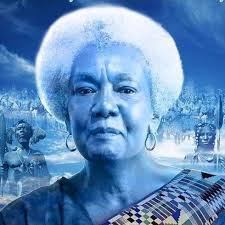

 RSS Feed
RSS Feed
